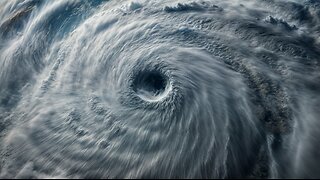Premium Only Content

USA NOW! Extreme Weather in Northeast: Tornadoes and Destruction in New York and New Hampshire
A storm that swept through New York State, USA, was so powerful that it tore roofs off 19th-century churches and knocked a multi-ton B-52 bomber off its platform.
A relentless series of severe storms rolled across the United States and Canada over the past week. They brought thunderstorms, hurricane-force winds, tornadoes, and flash floods.
On July 16, a devastating tornado hit the city of Rome, New York. The National Weather Service preliminarily rated it as an EF2, with maximum wind speeds of 135 miles per hour. The wind snapped trees like toothpicks and overturned cars and mobile homes with people inside. Twenty-two buildings in the city were damaged or destroyed.
Two 19th-century churches lost their spires and roofs. Copper sheets from the roof of one church were found a quarter mile away, wrapped around utility poles. The wind was so powerful that it managed to dislodge a 185,000-pound B-52 bomber displayed at the Griffiss Business and Technology Park at Griffiss Air Force Base. A mural depicting a figure from the Revolutionary War on horseback, a landmark in Rome, was destroyed along with the building it was on. Only the image of the horse's hoof remained.
According to Rome Mayor Jeffrey Lanigan, the storm's aftermath in the city resembled a war zone. Governor Kathy Hochul called it a miracle that no one died in the city of 31,000 people. She also noted that during her three years as governor, there has been an unusually high number of dangerous weather events, including heat waves, floods, and a record 42 tornado warnings issued across New York last week.
Approximately 300,000 customers across New York State were left without power at the height of the storm. A state of emergency was declared. The hardest-hit areas were Central New York, the Mohawk Valley, and the Southern Tier.
In Lyme, New Hampshire, an EF1 tornado with maximum wind speeds of up to 110 miles per hour also touched down on Tuesday evening. It remained on the ground for about 1.8 miles and knocked down at least 100 trees.
About 30 miles away, in Canastota, debris killed an 82-year-old man. Three houses were destroyed, and another 30 structures were damaged.
Extreme weather in the northeastern United States brought storms and numerous tornadoes that also hit the Midwest. The National Weather Service issued 16 tornado warnings, a record for one day since 2004. Severe weather also affected Canada's largest city, Toronto.
The increase in the scale, duration, frequency, and intensity of climate disasters is leading to significant damage from each hazardous weather event. People in the United States, as well as around the world, need to set aside even the most important matters and delve into the causes of the growing climate disasters. This issue should be at the top of the global agenda for both politicians and scientists.
However, they will only take serious action when there is a demand for it from the majority of people worldwide. Otherwise, everything will stop at the stage of discussions. If that happens, no plans will come to fruition. If you want to truly understand what is happening with the climate and what scientists have already developed to address this planetary-scale problem, watch the international forum "Global Crisis. The Responsibility."
https://youtu.be/xzm_sYcm5t4
-
 9:26
9:26
AllatRa TV
9 days agoPhilippines NOW! Super Typhoon Ineng Strikes: Mass Evacuations and Coastal Devastation
121 -
 56:08
56:08
State of the Second Podcast
17 hours agoWhat does the next 4 years look like for the suppressor market? (Ft. Rugged Suppressors)
26.5K6 -
 29:08
29:08
The Lou Holtz Show
11 hours agoThe Lou Holtz Show Ep 21 | Enes Kanter Freedom: A Voice For Human Rights #podcast
38.3K2 -
 28:31
28:31
America First Policy Institute
18 hours agoAmerica First Policy Institute Gala Donald Trump, Elon Musk & Sylvester Stallone Ignite the Movement
10.5K9 -
 4:36
4:36
BIG NEM
9 hours agoThe Sad Truth About How Our Cannabis is Grown
14.1K11 -
 3:07:08
3:07:08
Price of Reason
13 hours agoMainstream Media FEARS Extinction! Gladiator 2 Review! New DnD SCANDAL!
51.5K7 -
 8:23:44
8:23:44
Fresh and Fit
10 hours agoIsrael-Hezbollah Ceasefire & Reacting To Death Threats On X
132K32 -
 1:11:10
1:11:10
Steve-O's Wild Ride! Podcast
5 days ago $9.30 earnedDusty Slay Went From Selling Pesticides To Having A Netflix Special - Wild Ride #244
38.3K3 -
 1:16:02
1:16:02
CocktailsConsoles
8 hours agoBE PART OF THE GAME!!| Death Road to Canada | Cocktails & Consoles Livestream
26.8K2 -
 8:19:28
8:19:28
Phyxicx
10 hours agoWe're streaming again! - 11/26/2024
22.9K